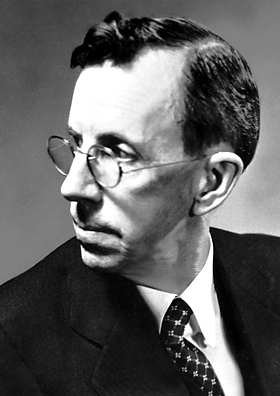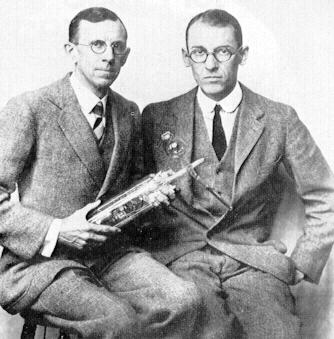
Clinton Davisson is an American physicist best known for his discovery of electron diffraction through the Davisson-Germer experiment. His findings brought about important developments in the field of quantum mechanics. On this day, which would have been his birthday, we celebrate Davisson’s storied history and many contributions to science.
A Commitment to Education and Research
Clinton Davisson was born in Bloomington, Illinois in 1881. His father was an artisan and his mother was a school teacher. After high school graduation, Davisson began his studies at the University of Chicago, where his attention to detail caught the eye of one of his professors, experimental physicist Robert A. Millikan. Financial hardship, however, forced him to leave school after just one year. He began working at a local telephone company, which sparked an interest in telephones.

Clinton Davisson in 1937.
In 1904, thanks to a recommendation from Millikan, Davisson was hired at Purdue University as an assistant. He went on to become an instructor of physics at Princeton University — all before he even earned a bachelor’s degree! Davisson later returned to the University of Chicago to complete his Bachelor of Science degree.
Moving forward under the direction of O.W. Richardson, Davisson sought to earn his PhD at Princeton University, completing a thesis titled “On The Thermal Emission of Positive Ions From Alkaline Earth Salts”. He started teaching as a professor at the Carnegie Institute of Technology shortly after receiving his PhD.
During World War I, Davisson took leave from teaching to take on a research position at Bell Telephone Laboratories. He ended up staying with the company for nearly 30 years, and for good reason. Bell Telephone Laboratories is where most of Davisson’s research on electrons took place.
An Accidental Discovery: The Davisson-Germer Experiment
At Bell Telephone Laboratories, Davisson met Lester Germer. From 1923 to 1927, the two men collaborated on research involving electrons and their patterns of behavior.

Clinton Davisson (left) and Lester Germer (right) in 1927.
Davisson and Germer’s initial intent was to observe the behavior of electrons aimed at the surface of a nickel. They wanted to analyze how many electrons would bounce off of the surface at various angles and see if they experienced diffuse reflection. To perform such analyses, the pair fired a beam of electrons from an electron gun at a piece of crystallized nickel at normal incidence within a chamber.
Thanks to a “lucky accident” during one experiment, air entered the chamber and produced an oxide film on the surface of the nickel. To get the film off of the nickel, Davisson and Germer heated it. This produced large, single-crystal structures over the nickel’s surface — unbeknownst to the research team. As the experiment continued, the electrons that were fired at the nickel scattered due to atoms released from the crystal structures. The results from this experiment generated a diffraction pattern that Davisson and Germer published in their research, but these weren’t the results that they had originally sought.
Perhaps frustrated with his own research efforts, Davisson decided to attend a meeting at Oxford University that included discussions of quantum mechanics. While unknown to Davisson, a presenter at the meeting used the data from his recent experiments as proof of electron diffraction and the de Broglie hypothesis, which states that particles of matter have wave-like properties.
After Davisson realized that his work had been a breakthrough, the Davisson-Germer experiment, as it soon became known, moved forward. Davisson and Germer continued to study electron behavior and diffraction patterns, producing the first known measurement for an electron wavelength.
Award-Winning Contributions to Physics
In 1937, Davisson received the Nobel Prize in Physics for his discovery of electron diffraction during the Davisson-Germer experiment. He accepted the award alongside George Paget Thomson, who had performed similar research independently around the same time.
After retiring from Bell Telephone Laboratories in 1946, Davisson returned to teaching. He held a research professor position at the University of Virginia until his second retirement in 1954.
Aside from providing data for electron diffraction and proving the de Broglie hypothesis, Davisson’s contributions to science were a historical development for the theory of quantum mechanics. His electron diffraction findings also contributed to the later establishment of the Schrödinger equation. Throughout his storied teaching career, Davisson influenced countless students, including Joseph A. Becker, William Shockley, and — outside of the classroom — his own son, physicist Richard Davisson.
In addition to his Nobel Prize and other various institutional awards, a crater on the Moon is also named after Clinton Davisson in honor of his scientific research. Try to spot the Davisson crater the next time there is a clear night sky.

The Davisson lunar crater.
Happy birthday, Clinton Davisson!




Comments (0)